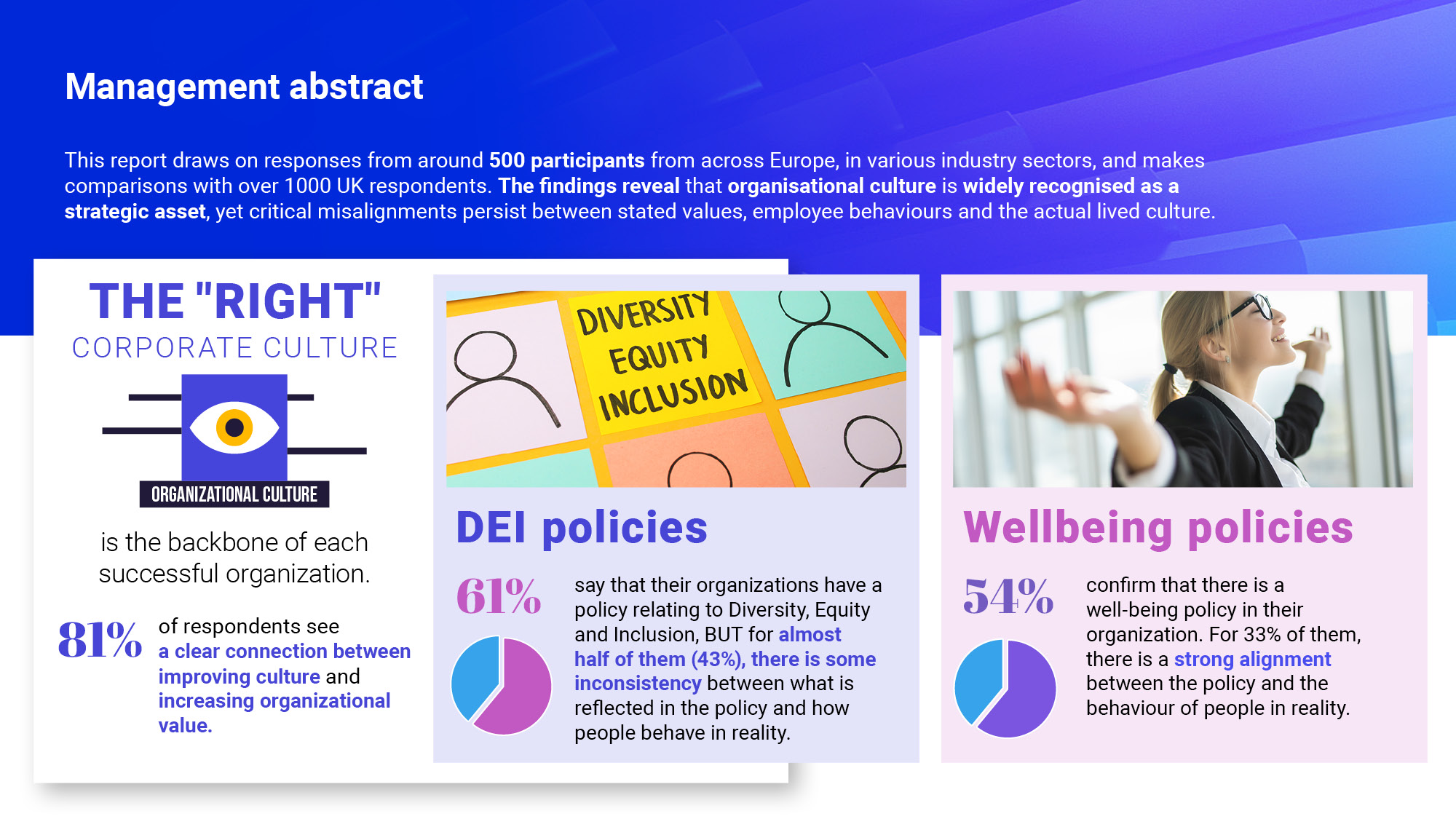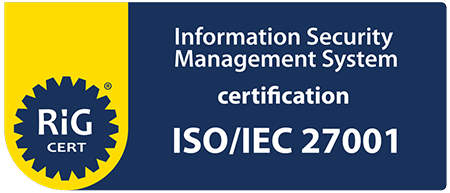The latest report from LS-S Leadership Support shows an alarming gap between stated values and everyday practice in organizations. Only 19% of employees in Europe believe that the actual culture in their companies reflects their officially stated values – a sign that "culture" is now among the top business priorities, rather than a background factor.
In a context of talent shortages and raised expectations of employers, culture is a direct lever for retention, engagement, and sustainable growth. It is no surprise that 81% of participants believe that working on organizational culture has a direct impact on the value and sustainability of the business.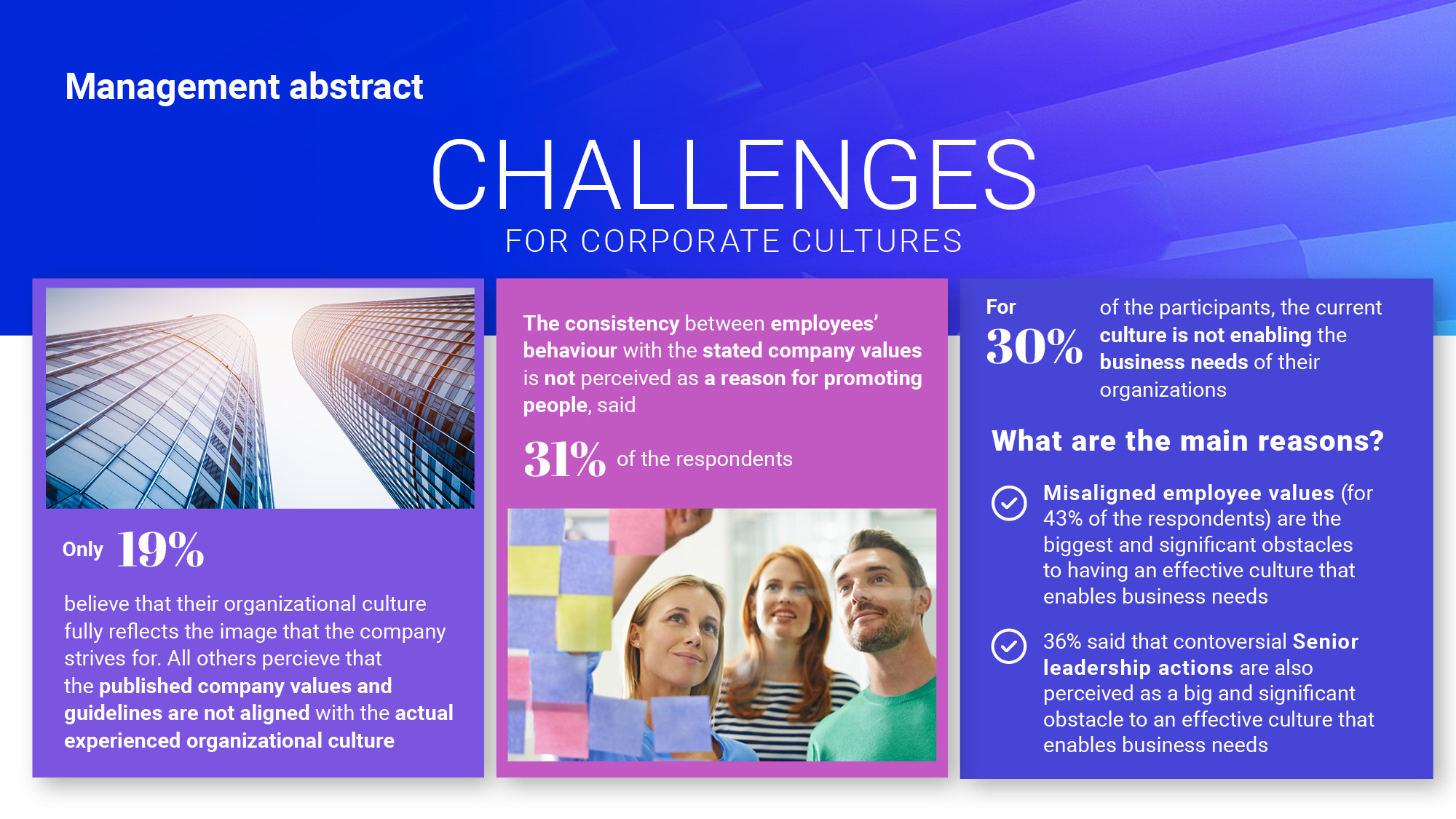
The study and its partners
The study was conducted in May–June 2025 by LS-S Leadership Support in partnership with prof. Zara Whysall (Nottingham Trent University) and with the support of:
Bulgarian Association for People Management (BAPM)
Academy of German Cooperatives (ADG)
Kommunikations-Kolleg AG – Germany
This is the fifth international study by LS-S and covers Bulgaria, Germany, and Romania (with over 500 participants). Тhe results are compared to a similar study conducted in the United Kingdom (with over 1,000 respondents).
What the study reveals
- Value-behavior gap: only 19% see a real correspondence between stated values and the culture in action.
- DEI on paper, but not always in practice: 61% of organizations have a DEI policy, but 43% do not recognize it in their daily behavior and decisions.
- Wellbeing: a wellbeing policy exists in 54% of companies, but only 33% see consistent implementation.
- Career decisions and values: 31% of respondents believe that alignment with values is rarely a real criterion for recognition or promotion.
The main obstacles to building an effective and authentic organizational culture that supports business goals and employee engagement are the mismatch between personal and corporate values (43%) and the contradictory actions of senior management (36%).
![Org_Culture-Report-ENG_p2.jpg Org_Culture-Report-ENG_p2]()
Comparison between participating countries
A comparative analysis between Bulgaria, Germany, Romania, and the UK shows clear differences in how organizations perceive and apply their values in everyday practice:
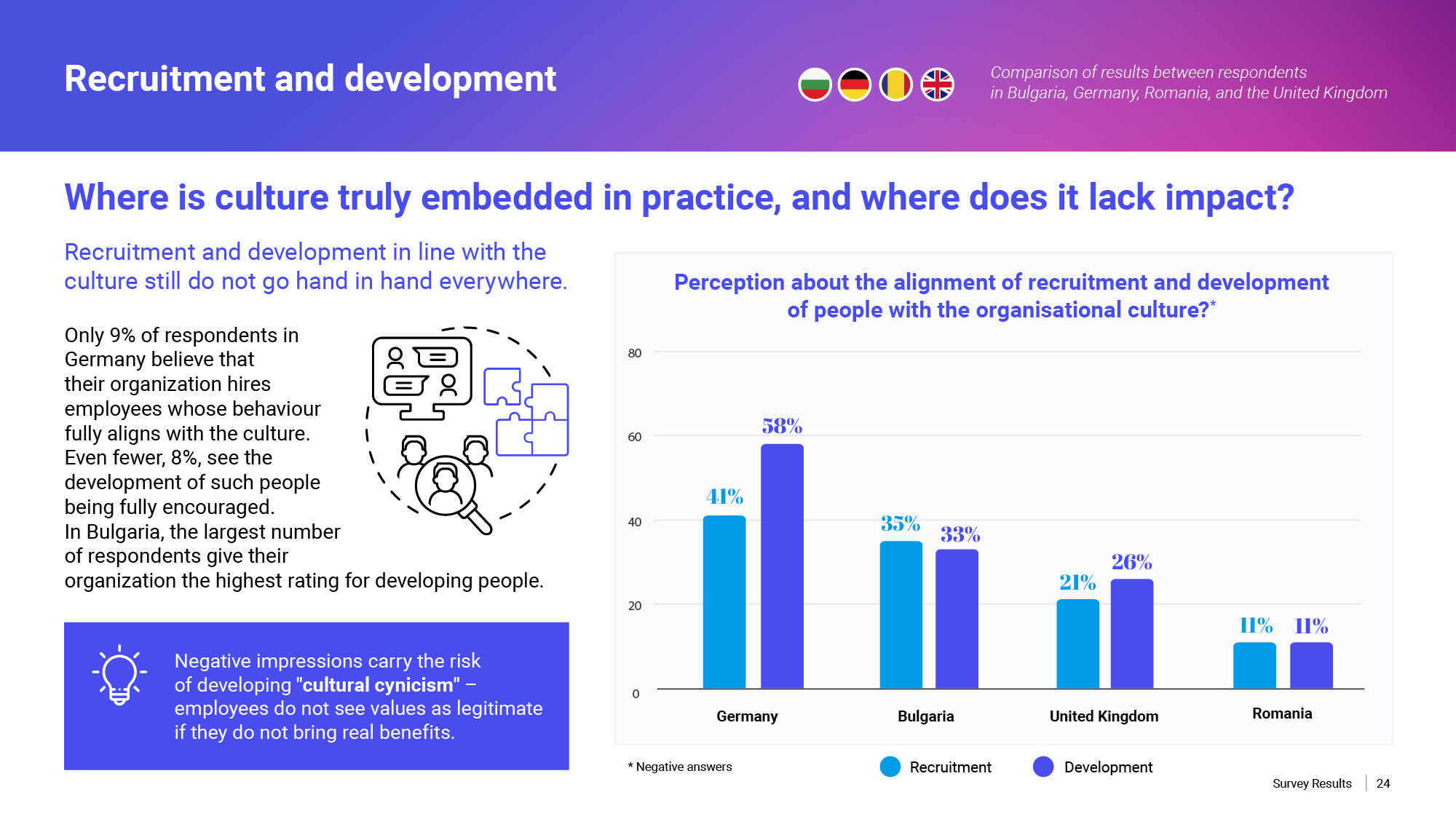 Germany demonstrates the highest level of criticism on the subject – only 9% of respondents believe that their organization hires people whose behavior fully corresponds to the culture, and only 8% see consistent encouragement of their development. However, 58% of German companies are already taking active steps to improve their organizational culture.
Germany demonstrates the highest level of criticism on the subject – only 9% of respondents believe that their organization hires people whose behavior fully corresponds to the culture, and only 8% see consistent encouragement of their development. However, 58% of German companies are already taking active steps to improve their organizational culture.
Bulgaria shows moderate optimism – 54% of organizations are already working purposefully on their culture. At the same time, employees point out that there is often a discrepancy between declared values and actual leadership behavior, which undermines efforts toward cultural authenticity.
Romania stands out as the most positive among the countries surveyed. 77% of participants believe that the culture in their organizations is close to the desired level, and 61% of companies are actively working on change and improvement. The country also shows the highest levels of inclusive behavior and positive attitudes toward DEI policies—over 70% of respondents say their culture encourages ethical choices and inclusion.
The UK, despite its more mature corporate culture, also faces challenges. Only 21% of employees believe that recruitment processes truly reflect the organization's values, and 26% see a complete alignment between people development and cultural principles.
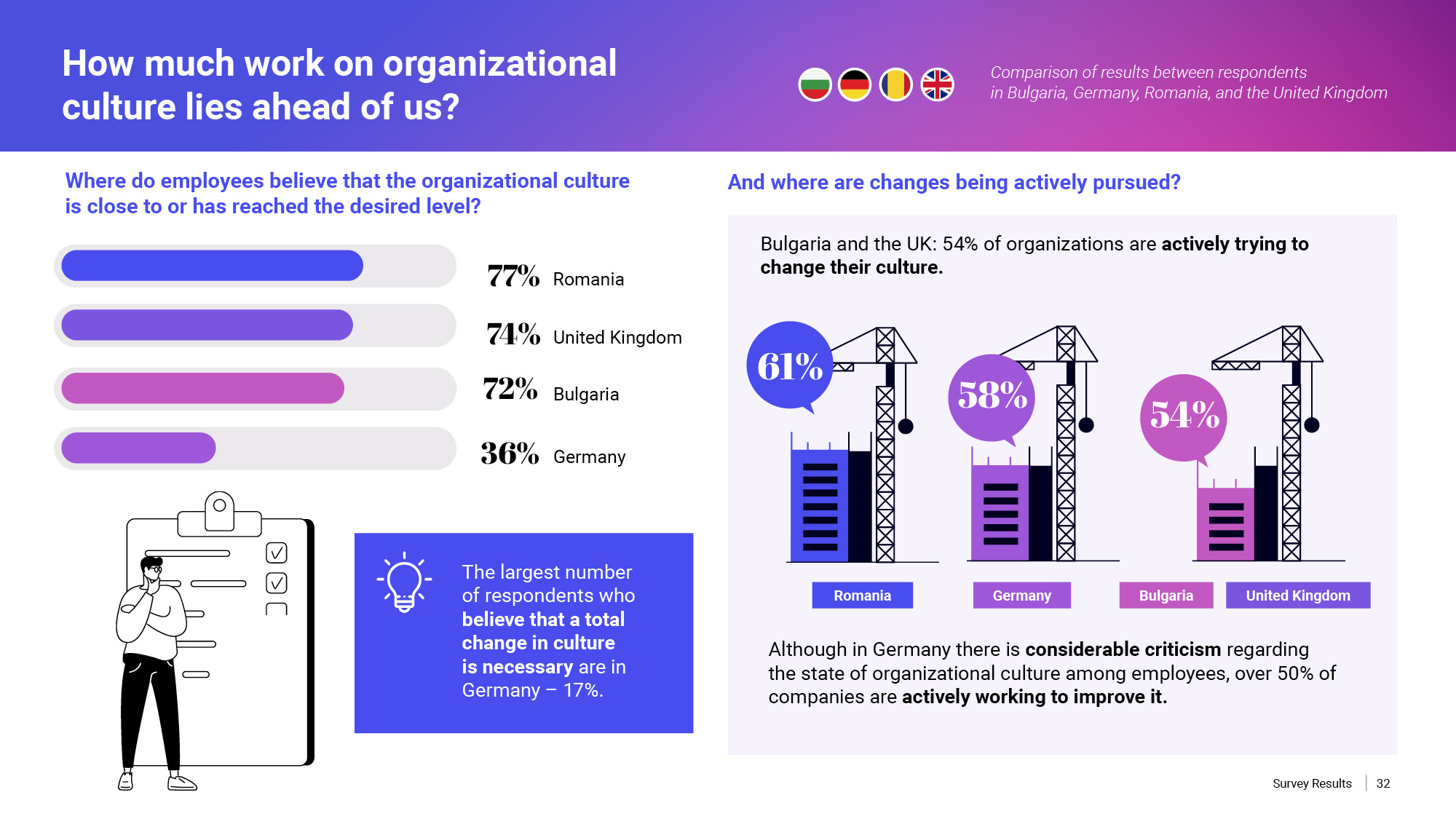
Culture is no longer the backdrop against which business happens—it is the stage itself.
"Culture is no longer the backdrop against which business happens—it is the stage itself. Companies that make it part of their daily practice gain trust and a sustainable competitive advantage," comments Kamen Kanev, general manager of LS-S Leadership Support.
What are the next steps for leaders based on the findings of the study?
- Connect values with processes: Turn values into clear behavioral indicators and integrate them into recruitment, evaluation, development, and compensation.
- Personal example: Measure and discuss the behavioral consistency of leaders - inconsistencies undermine trust.
- Bridge the gap between policy and practice: Identify areas where DEI and wellbeing principles exist only on paper and those where they are already alive, with visible habits, engaged people, and measurable results.
- Link culture to business KPIs: Track effects on turnover, engagement, NPS (Net Promoter Score) of candidates/employees, time to fill a position, productivity.
- Give employees a voice – for example, through pulse surveys.
- Invest in leadership skills: Develop skills for inclusive behavior, feedback, and mentoring.

